Quadruple Supernova Explosion (Photos)
Gravitationally Lensed
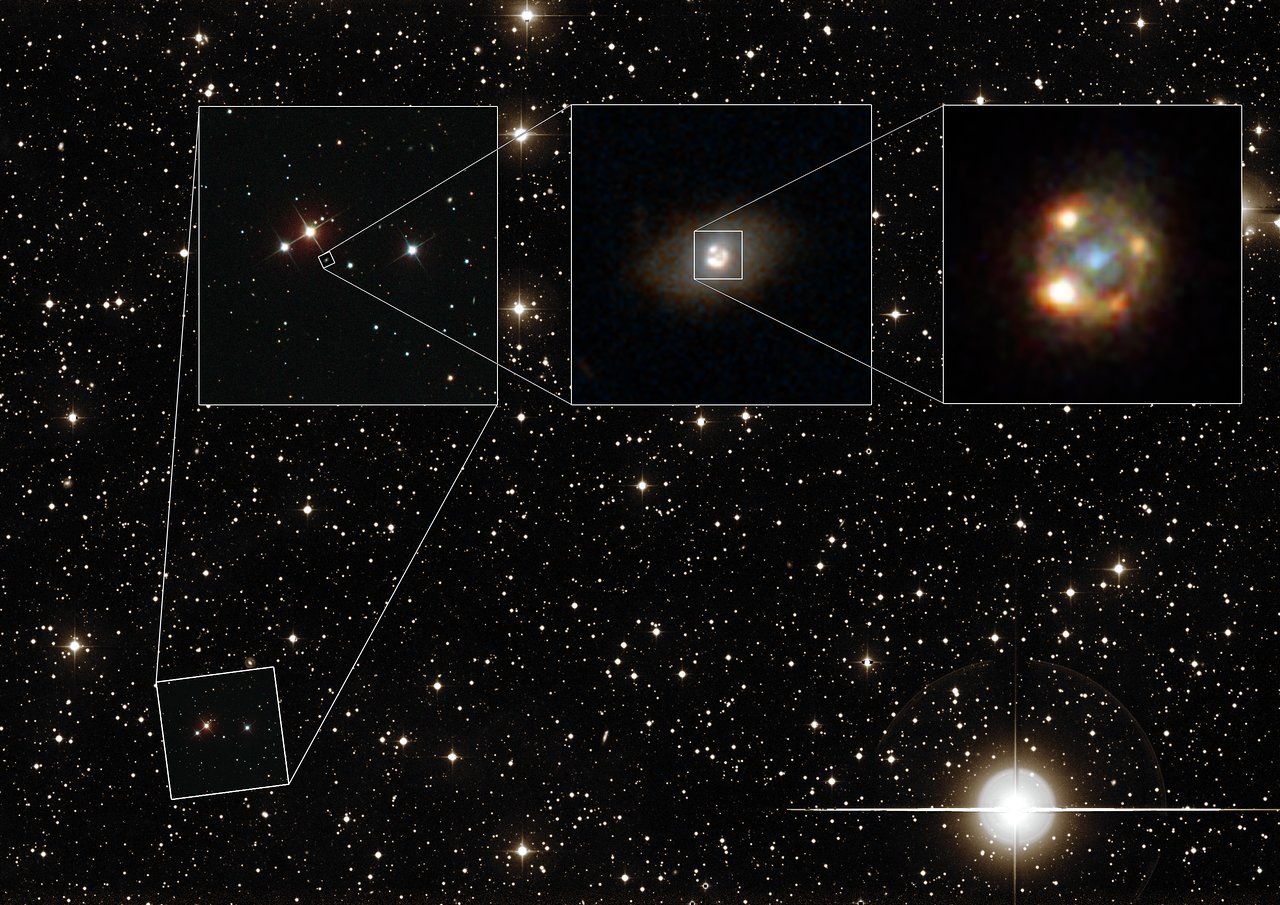
A wide-field view of the night sky from the Palomar Observatory in California reveals a stunning backdrop to a composite image of type Ia supernova iPTF15geu. The leftmost image image came from Sloan Digital Sky Survey. The center and right image are from NASA/ESA's Hubble Space Telescope and show the lensing galaxy SDSS J210415.89-062024.7 in the center and four lensed images of the supernova explosion around the lensing galaxy.
Looking through a Lens
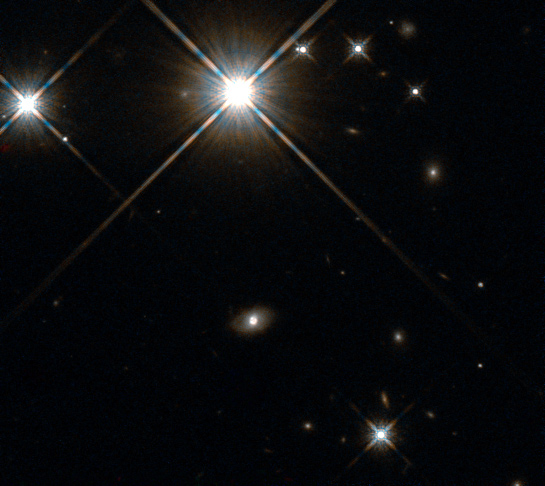
At 2.5 billion light years away, galaxy SDSS J210415.89-062024.7 acted as lens to a supernova even further into the cosmos. The gravitational lensing created four distinct images of the explosion.
Seeing the Past
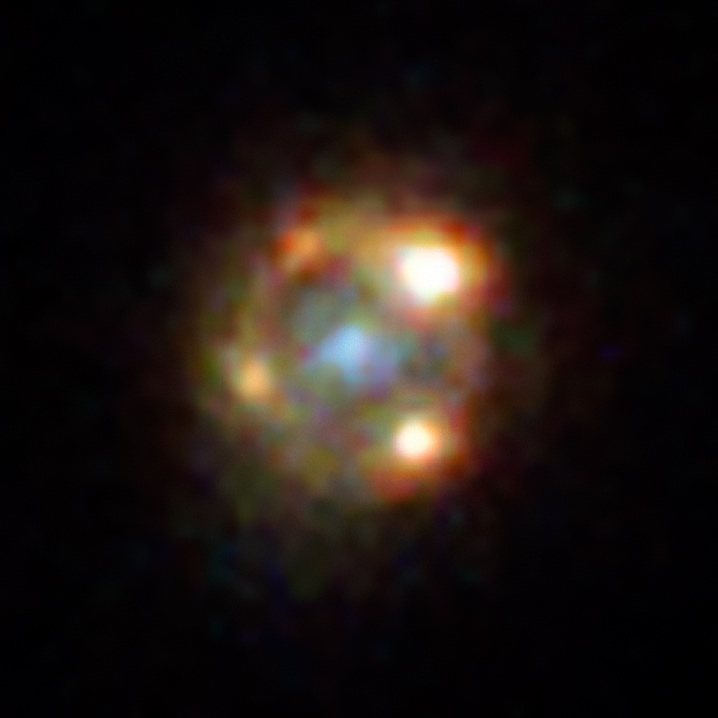
The light from supernova iPTF16geu traveled 4.3 billion years to get to Earth. The only reason astronomers saw it was the foreground galaxy lensed the light, magnifying it by 50 times. The gravitational lensing also caused the glow from the supernova to appear in four distinct places in the sky surrounding the lensing galaxy.
The Great Cosmos
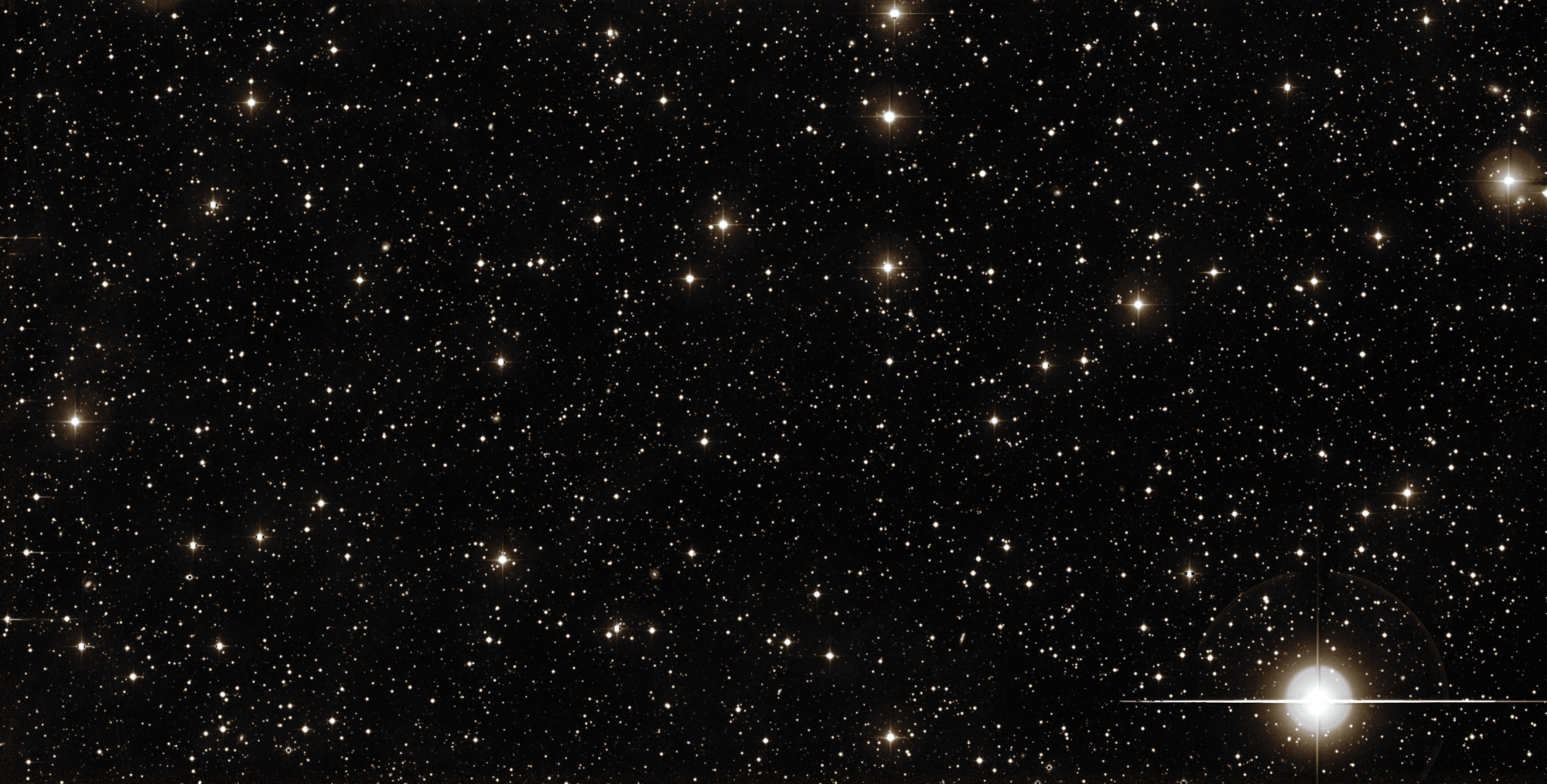
On Palomar Mountain in California, the Palomar Observatory collected this wide-field view of the night sky. A supernova explosion whose light traveled 4.3 billion years was discovered in the lower central part of the image because of gravitational lensing.
Search for Supernovae
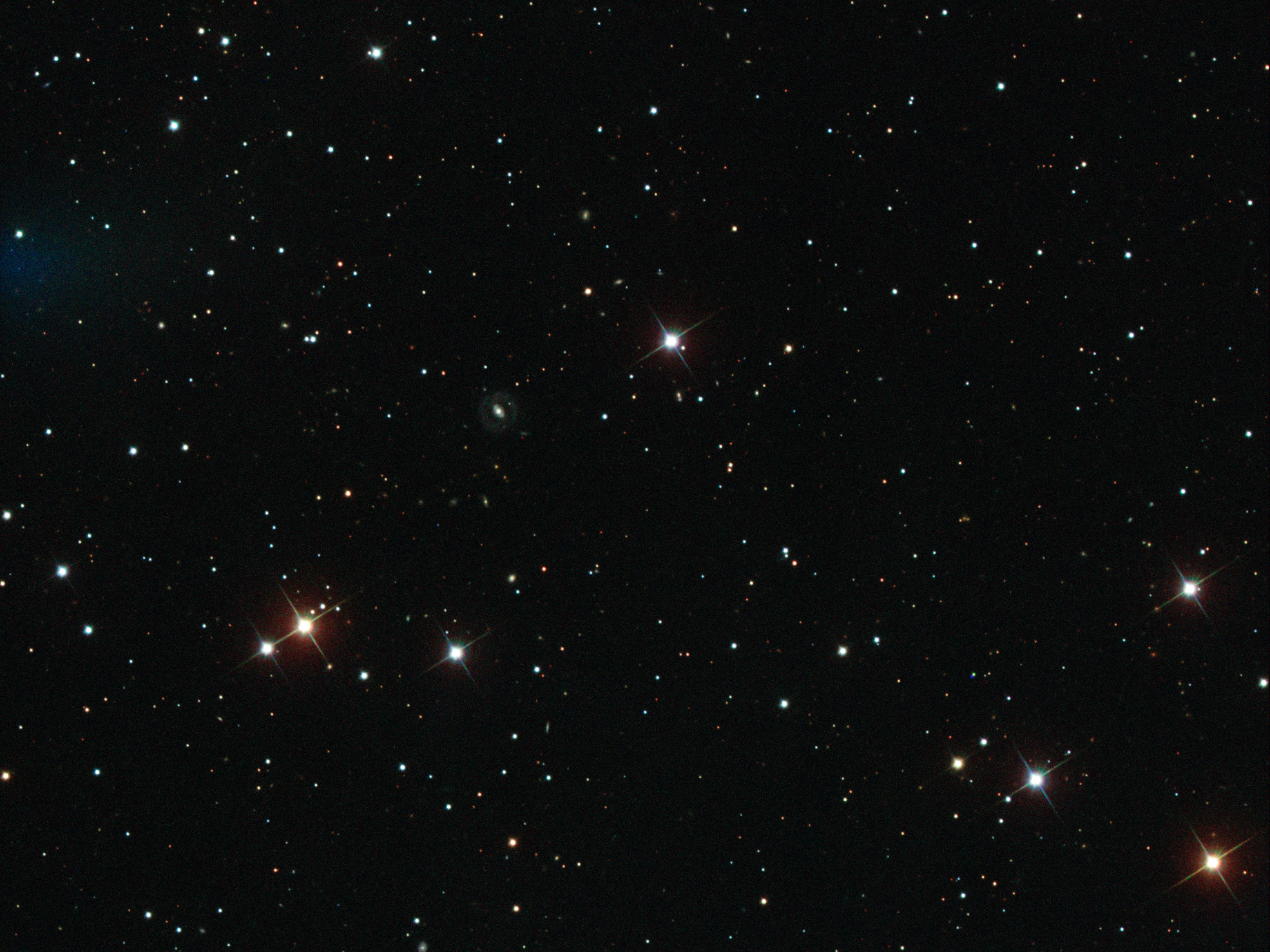
Using the Sloan Digital Sky Survey, astronomers scoured the skies for supernovae, employing a 2.5 meter wide-angle optical telescope at Apache Point Observatory in New Mexico. The tiny red dot at left center in the image is the explosion iPTF16geu.
Lensed Supernova
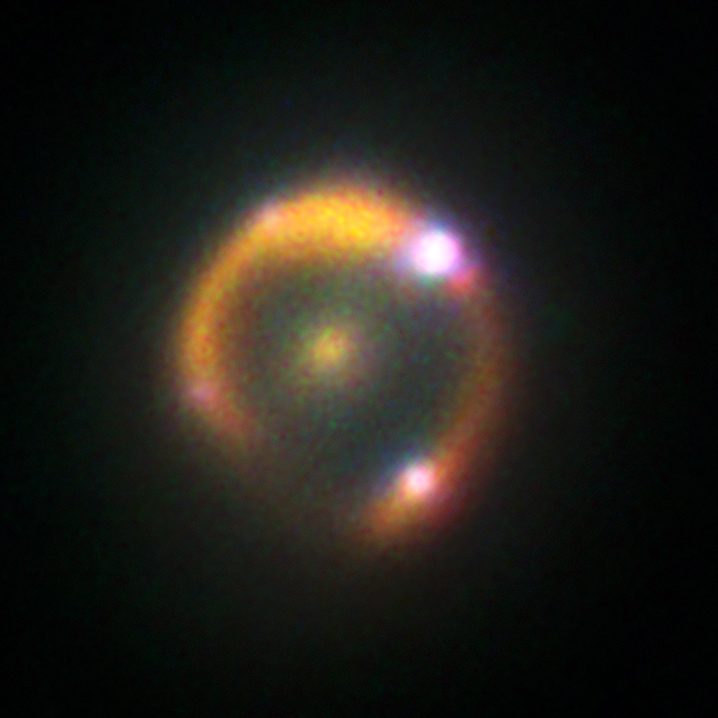
The Keck Observatory in Hawaii leapt into action to capture this view of the supernova iPTF16geu after it was spotted with the Hubble Space Telescope, a lensing event magnifying it by 50x.
Supernova iPTF16geu
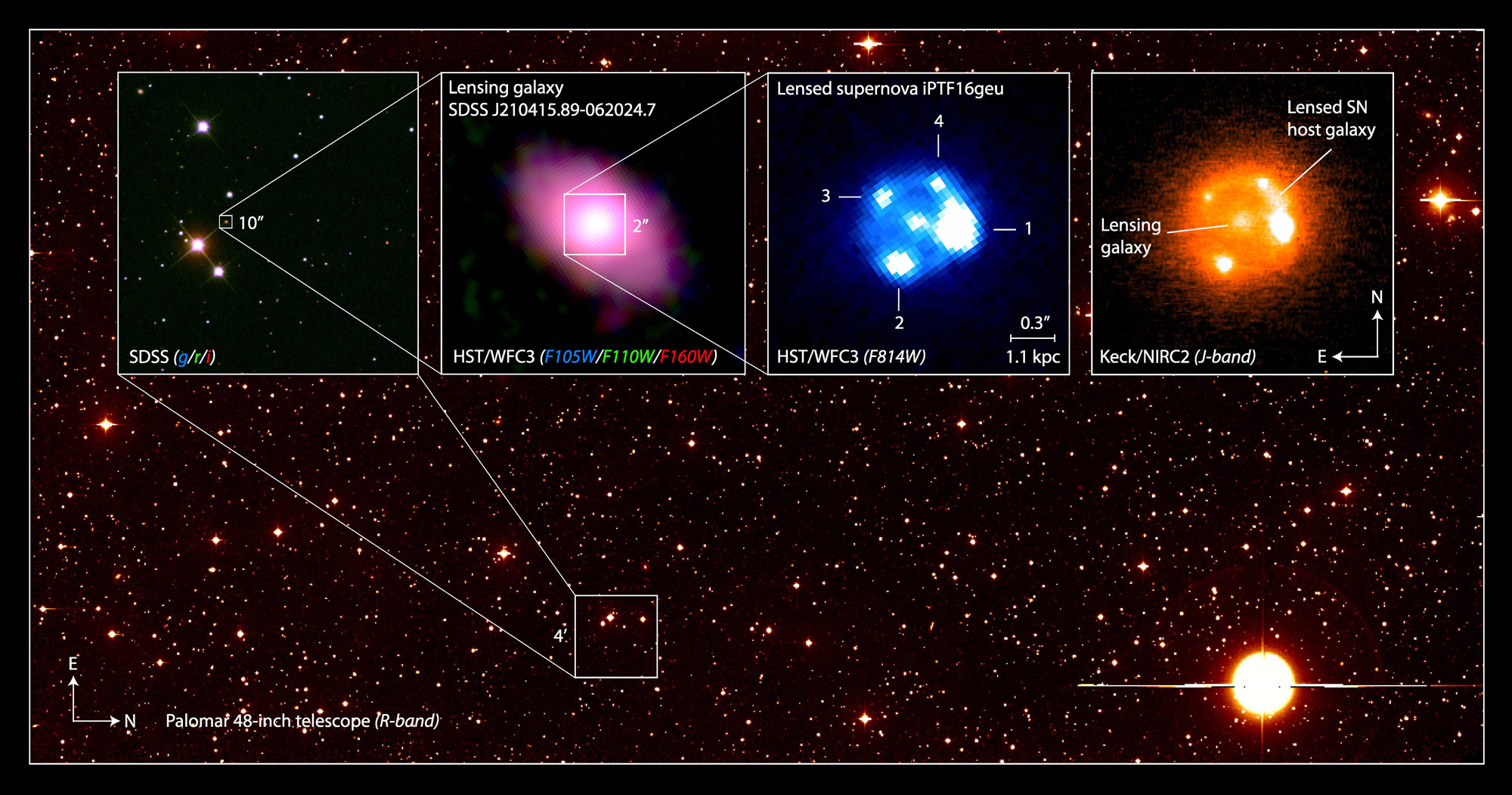
The supernova iPTF16geu located in an image by the Palomar 48-inch telescope in California. The first photo shows an image of the area from the San Diego Sky Survey, and Hubble Space Telescope images reveal a foreground galaxy and the faraway supernova, whose light bent around the galaxy to arrive at Hubble four different times. An image of the supernova from the Keck telescope is also included.
Breaking space news, the latest updates on rocket launches, skywatching events and more!
Visual boost
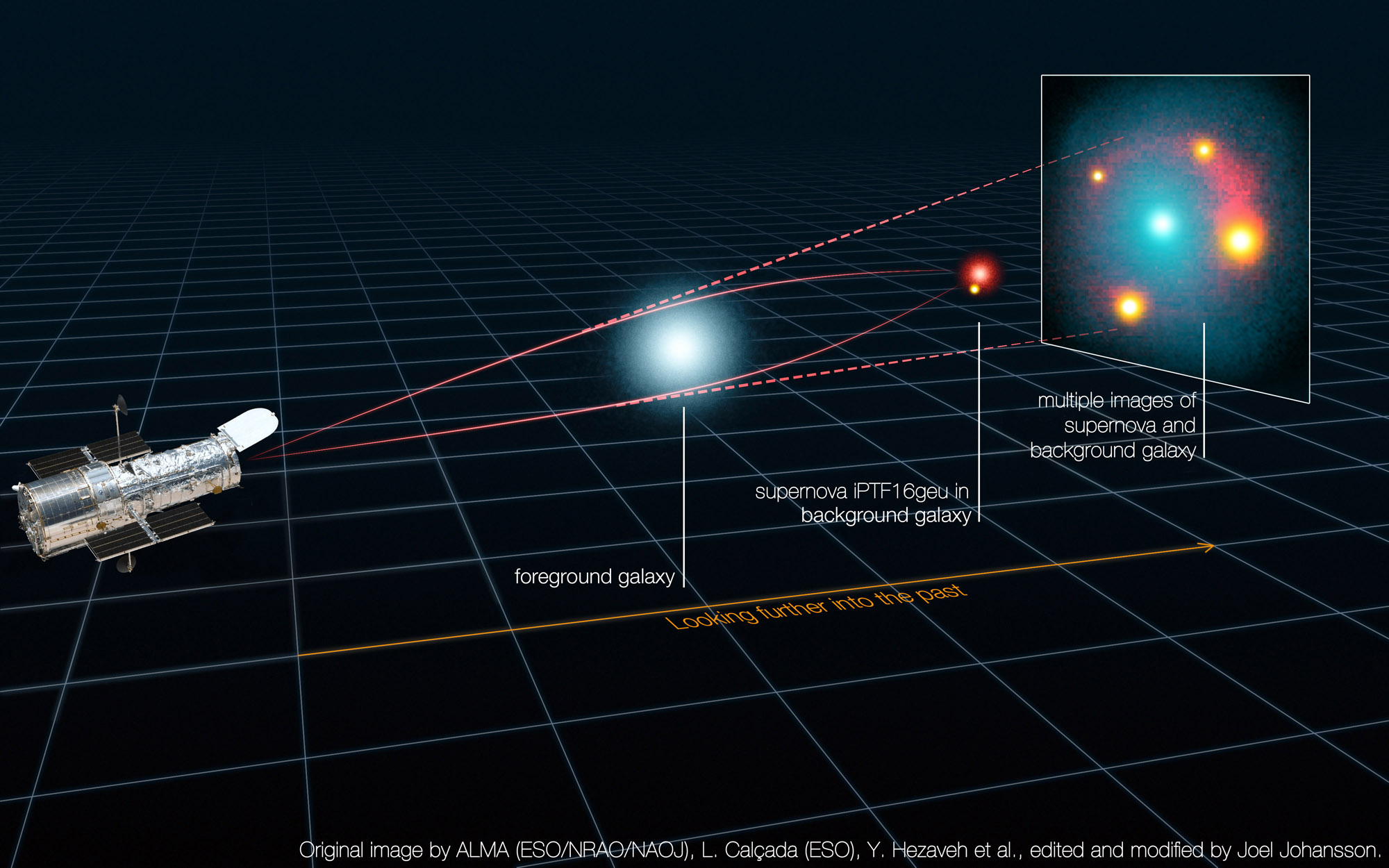
This diagram shows how the supernova iPTF16geu got a visual boost from a galaxy that came between it and the Hubble Space Telescope. The gravity of the intervening galaxy warped the light coming from the supernova, sending it to Hubble split into four images and magnifying it by more than 50 times.
Different Views
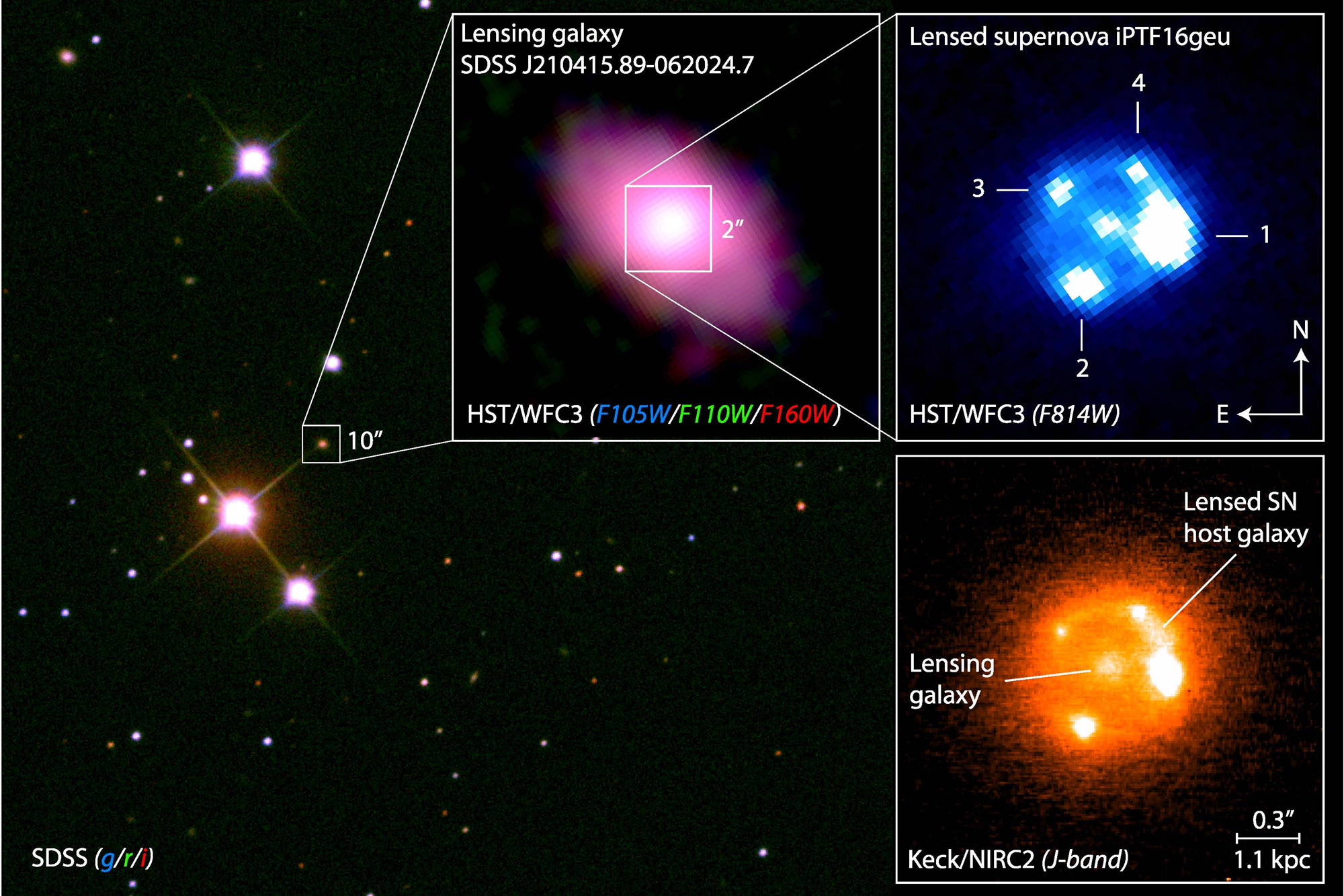
Researchers rushed to capture views of the supernova iPTF16geu with different telescopes when the supernova was caught magnified 50 times as a foreground galaxy passed between it and the Hubble Space Telescope.
Join our Space Forums to keep talking space on the latest missions, night sky and more! And if you have a news tip, correction or comment, let us know at: community@space.com.

Space.com is the premier source of space exploration, innovation and astronomy news, chronicling (and celebrating) humanity's ongoing expansion across the final frontier. Originally founded in 1999, Space.com is, and always has been, the passion of writers and editors who are space fans and also trained journalists. Our current news team consists of Editor-in-Chief Tariq Malik; Editor Hanneke Weitering, Senior Space Writer Mike Wall; Senior Writer Meghan Bartels; Senior Writer Chelsea Gohd, Senior Writer Tereza Pultarova and Staff Writer Alexander Cox, focusing on e-commerce. Senior Producer Steve Spaleta oversees our space videos, with Diana Whitcroft as our Social Media Editor.
